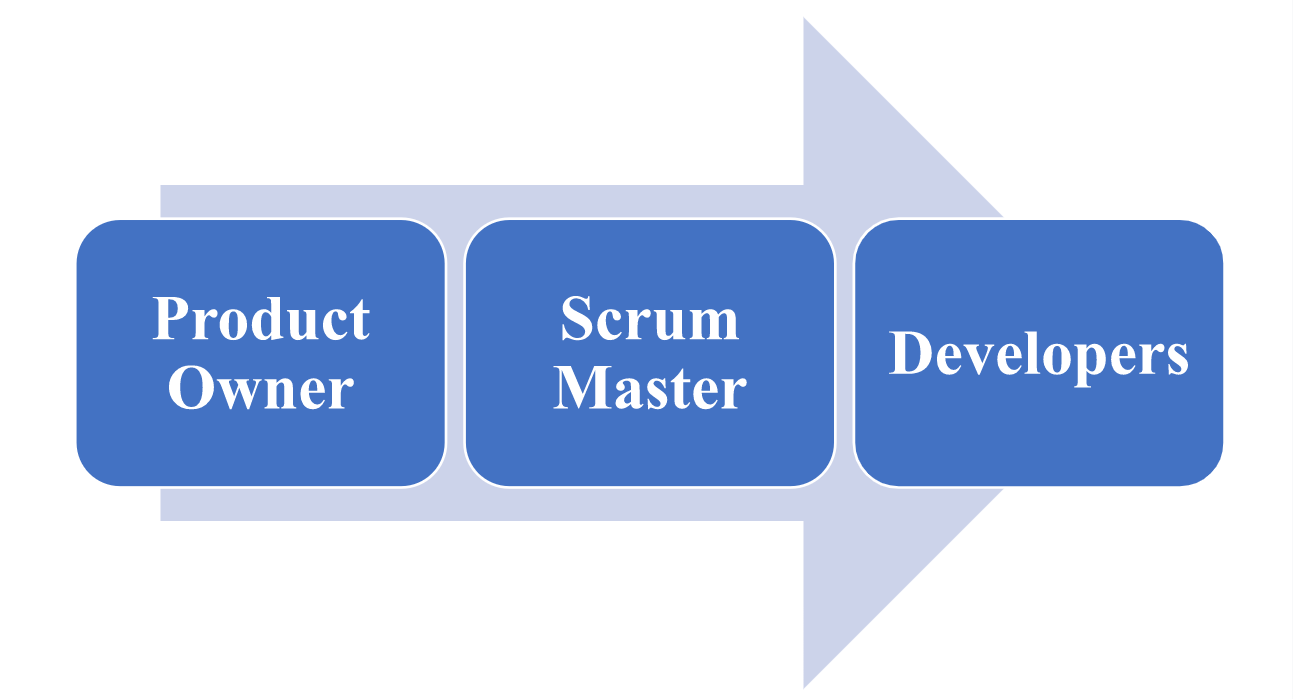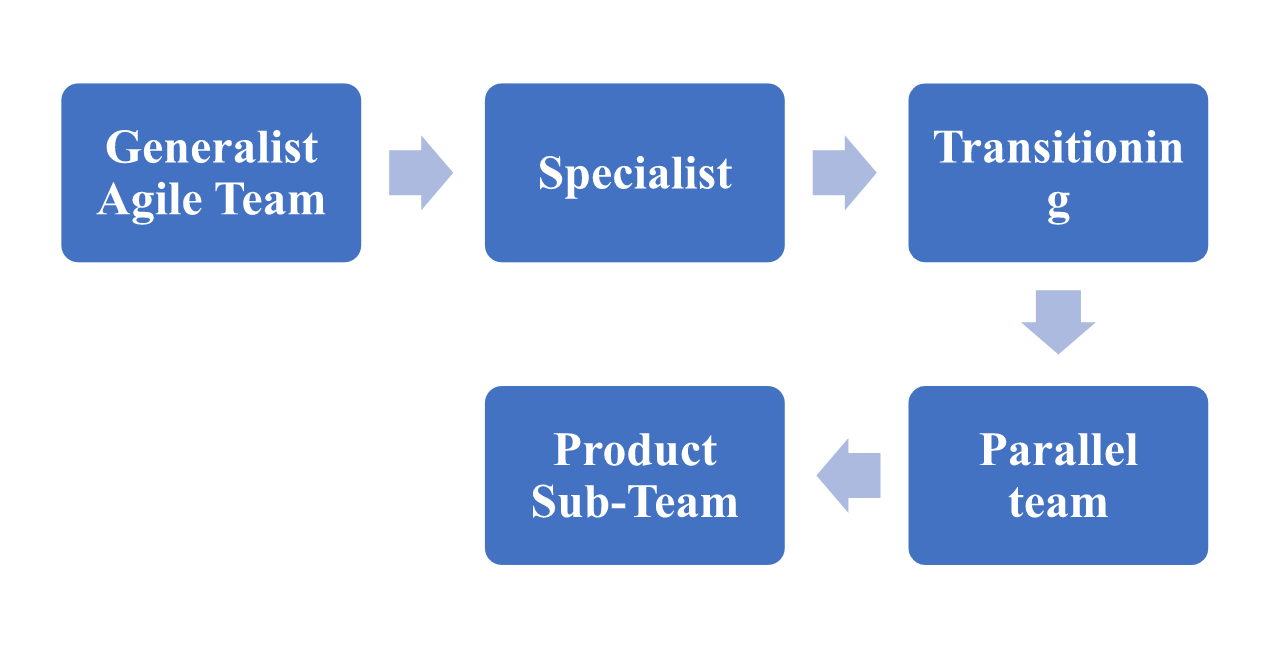Importance of an Agile Team Structure: How to Build from Scratch?

The agile team structure is becoming one of the most acceptable and popular modern approaches. Moreover, due to its uniqueness, this approach is prevalent everywhere, from E-com stores to software development houses. Apart from this, adaptiveness and innovative technology have made it compulsory. So, the agile team model is the best if you manage projects and want to deliver products in the most uncertain environment. But before implementing this model, you should search it in-depth. However, in this piece of writing, let’s start learning it from scratch:
What is the agile team structure? A breakdown of the definition:
We all know that there is an exceptional team behind every successful project. But it’s a complex process and involves so many technical issues that you need to sort out on a priority basis. The short meaning of an agile team is a group of people who always remain alert and responsive. In-depth:
“Agile team structure consists of people who come from a dynamic working environment and have different skills. This team aims to complete everything independently without outsourcing a single skill.”

But you need to understand that agile teams are different from project groups. Both teams are other because you need members with skills in other fields or areas. However, later they become a trusted group of people and come together to complete tasks, projects, and duties. The agile teams can use various methods and approaches that go best with their requirements. But according to the stats for 2021, 66% of agile teams use SCRUM.
Scrum framework in Agile team structure:
A scrum framework is an approach people use while implementing the agile method. Mainly this model works on continuous improvement and allows the strong team to work together for project development. But you will have to follow the rules for achieving projects and environments. Mainly, three leading roles play an essential part:

Moreover, there are many other requirements that you will have to meet to create the agile scrum team structure. For instance, a product owner is a person that defines the direction of the project. In addition, Scrum master ensures that the team follows best practices and removes things that work as a blockage in productivity. Besides, the developer team is a group of people who come together to convert the product owner’s vision into reality. The team consists of different people like writers, architects, designers, and other specialized people.
Importance of using Agile team structure: Reasons to give it a try:
Multiple factors play a crucial role in building a successful agile team structure. For instance, the one thing you need the most is “Collaboration, Collaboration, and Collaboration.” You need to change direction if your team goals aren’t interlinked and aren’t solving problems. The traditional team follows a waterfall approach where they develop a plan and set deadlines. But if there is a change in requirement, then there is no going back. But agile teams are different, and instead of planning the entire project, the group makes constant adjustments. For instance:
“The agile team is always open to new ideas. Moreover, the group discusses priorities and plans with the customers and stakeholders. Moreover, if there is a change in plan, then the squad quickly works to meet the new requirements.”
Nowadays, organizations are working in the most dynamic environment where things constantly change. However, in this situation, the agile structure is the best thing you can implement in the organization.
Benefits of applying Agile team structure:
Agile teams have unique benefits you can’t find in any other structure. Here are the top perks that you can get by adopting this model:
High ROI:
The main aim of any business or activity is to earn profit. However, the agile structure focuses on the final product and constantly tries to improve processes. This way, you can deal with the competition as quickly as you want. As a result of this efficiency, you can serve the market by introducing high-quality products or services. So, ultimately you will get the benefit of this quick service by earning more profit.
The agile team structure has more control:
Earlier, we discussed that traditional teams follow the waterfall technique in project management. In this technique, they make plans and set deadlines to meet the SMART goals. But if there is a change in requirement/plan, then there is no going back, and all hard work will go in vain. On the contrary, an agile team structure has more control and reviews the project daily. In this way, it becomes easy if there is a change in plan. According to the data of PMIs Pulse of Profession:
“More than 71% of companies have implemented agile methods in one project.”
However, we see improvement due to the agile method in big companies. For instance, we can take the example of Apple, Philips, and Microsoft, a few big names who implemented this model.
More customer satisfaction:
How can we forget customer satisfaction if we discuss the benefits of the agile model? When a company starts a project, the main aim is to shift the end benefit to ultimate customers. Moreover, in an agile team structure, the customer is more involved throughout the process. Thus, the agile approach helps to build a system that is structured. In addition, the model reserves a place for the customer to see, advise and revise the whole project.
In short, the scrum agile team model is famous in many ways. Here are the following other benefits that are making this model popular:
| It comes with a short feedback cycle | You can change processes on time |
| Helps to improve the quality of products | There is more transparency throughout the process |
| The team’s purpose is shared. | It helps in better user and stakeholder satisfaction. |
So, if your requirements aren’t precise and you lack vision, then the agile team method is the one thing that can help you the most. However, give the agile team a try if you want more transparency and defined processes.
How to build the agile team structure from scratch? An ultimate guide:
The main aim of agile project management is to break down one large project into small parts. However, it becomes easy if one big project consists of manageable tasks. It makes the work faster; you can adapt to changes and optimize the workflow anytime. But if you are taking a start, then follow these steps to build the agile team structure:
Find a balanced team:
The foundation of the Agile team is based on finding a balanced group of skilled people to handle tasks. Here is a glimpse of certain qualities that should be in your team.
| The team should be flexible. | Adaptation ability |
| Should be able to collaborate efficiently | Innovativeness |
For instance, a balanced team includes every profession you need during the project. If you don’t want to hire people due to budget constraints, you should get them on board in case you need them. Apart from this, find a group of people who know self-management, self-directed learning, decision making, and pressure handling abilities.

Define the Agile team structure:
After reading the above conversation, it’s evident that the agile team approach is an emerging trend. However, to move forward, you must choose the team structure wisely. Here are the main types of the agile team:

- Generalist Agile team: In this framework, anyone can pick up any task at any time. However, mainly this model is for projects that are well understood, and workers know working in diverse roles. But in this model, you will have to find people with the right skills.
- In addition, the specialist agile team is the one in which everyone has tasks according to their skillset. This way, the organization can ensure high-quality tests and data analysis most efficiently. The specialized teams work in a large group of numbers, like 20 instead of 5-6 people.
- Transitioning agile team: Model which people adopt at the beginning stage. However, in this type, the team gets time to learn about the agile method while working on ongoing projects.
- Parallel Agile team: It is challenging to manage because everyone gets the chance to cross-function. For instance, you write a code, and then the next step is to test that by running it on a machine.
- Agile product Sub-team: It is usually applied in large organizations. However, in this model, the team is self-contained and responsible for a specific work area. Apart from this, we can say it’s an organizational-level model that is effective for big companies.
But if you think the agile team isn’t working best, you don’t fit into any of the above models. So, choose the model that goes best with your organizational requirements.
Accept mistakes & improve them:
If you are a beginner who is just taking a start, then you need to understand that mistakes happen. The only need is to learn from those failures and try to improve the situation. It is perceived that agile teams don’t have rules and defined structures. But successful agile teams are goal-oriented and have the purpose of bringing something to the table. Sometimes, the agile team structure embarks on failure, which is unacceptable in many organizations. So, as a result, it slows down the pace and later makes the failure inevitable. Thus, if you want to overcome this challenge, adopt a failure management strategy.
Keep the communication priority:
Nothing can happen overnight, and like many other things the foundation of an agile team takes time. Many factors are essential for building a structure that can handle day-to-day tasks and task organization. You can make a robust setup with open communication in your organization. Apart from this, other abilities should be there:
- Team workers and leaders know how to adjust to the new work environment
- Task management
- The team knows to cooperate because, in this way, you can improve productivity.
- Above all, the skill of conflict management is of utmost importance
Besides, resource allocation and management are two other skills that convert a traditional team into an agile team structure. So, be ready to embrace changes and learn from your mistakes by wearing them as badges.
Conclusion:
You can achieve the end goals efficiently if you have a better agile team structure. A good team is adaptable, flexible, skilled, and able to handle pressure. We know it’s challenging to find such people, but you can polish the team working by giving training. Moreover, you need to understand that there is no hierarchy in the agile team method, and workers define their duties independently. But if you want prolonged results, then focus on constant team composition. In addition, it’s better to keep the team small for better and more efficient working. So, keep challenging things until the agile team starts giving results.